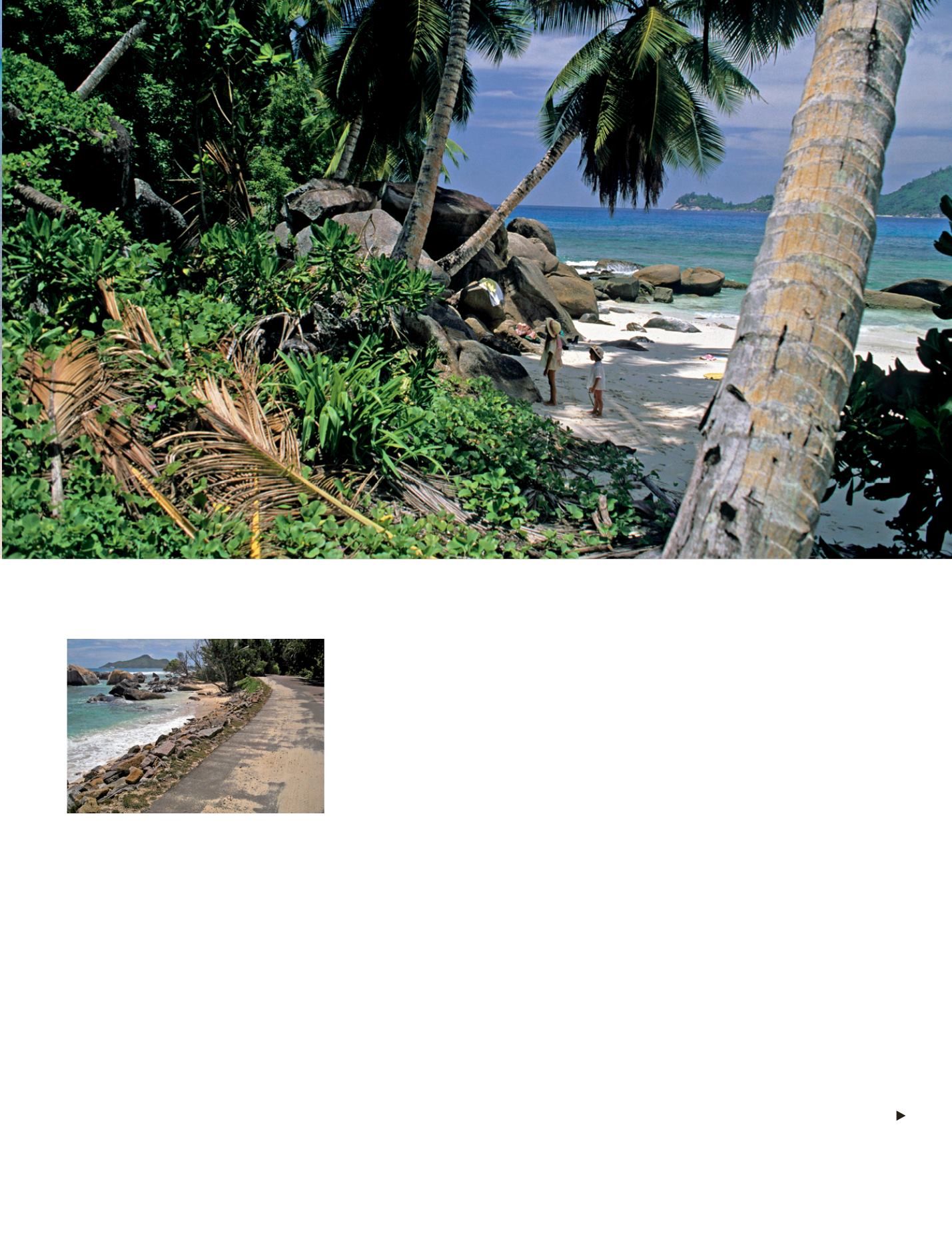
Seas - 83
i
Praslin Island in the Seychelles is famous for its soft white sandy beaches and its ‘Coco de mer‘ coconuts which only grow on the ancient giant palm trees in
the
Vallée de Mai
nature park. Tourism provides about 25% of Seychelles’ GDP.
© Ax Lange
fish resources can throw the community
into extreme poverty. Then the local
fishermen, who are seasonal fishermen,
go out to fish and then they sell it on
local markets and once the fish season
is over they go into something else like
agriculture. These career fishermen play
a very important role; they use very low
impact fishing methods and we interact
with them for example for protecting areas.
Third category, the industrial fisheries,
with big boats, are long range and they
fish big fish like tuna which is for canning
factories, often exporting to Europe and
other countries.
50% of the world’s population will live
within 100 km of the coast by 2030. Is it
true in Africa?
Yes. In fact there’s a high migration of
people towards the coast, obviously
because there are a lot of economic
activities related to tourism. In some
places like Somalia, the economic
activities are related to piracy, so
people are moving where the money
is. This creates problems for the
local communities as well as there is
increasing competition for food, for
labour... It also brings a number of issues
like crime, inappropriate housing, and all
sorts of problems.
What type of organisation is the Indian
Ocean Commission (IOC)?
The IOC is a regional organisation with a
very wide role concerning political, enviro-
nmental, social and governance aspects. It
provides support, networking, exchange of
information, trade… for the development of
all the member states.
Concerning coastal fisheries, the
Seychelles and Mauritius are more
advanced in their management than
Comoros and Madagascar for example.
Primarily due to political stability and of
course better management and training.
Mauritius invested a lot in agricultural
development—e.g. the sugar cane
industry—in the last 50 years or so. So
they had a serious pollution issue. Now
they are investing a lot in mitigation
and remedial measures for the coastal
environment.
They have a very strong and growing
tourism industry which also contributes
to a number of impacts on the coastline,
such as pollution and conflicts with the
local people.
Both Madagascar and Comoros have
serious issues with marine debris
and waste because of poor waste
management systems put in place.
They also have a very high level of
poaching (or subsistence fishing) and
they still use poisoning or dynamiting
methods for fishing, which are no
longer very widespread in the Indian
Ocean countries.
What are the main stakes related to
sustainable development in IOC?
i
Protective stone wall by the roadside, Seychelles.
© UNEP, GRID Arendal/Lawrence Hislop


